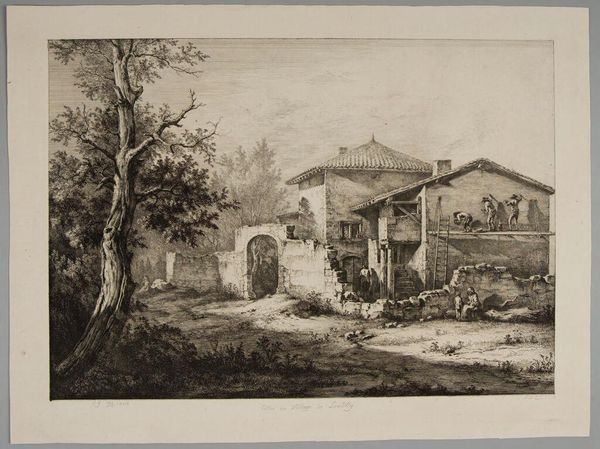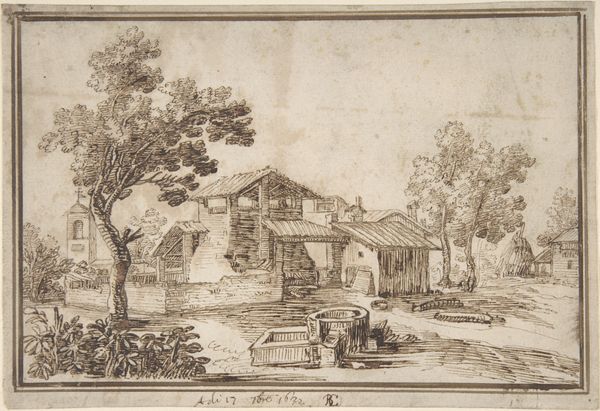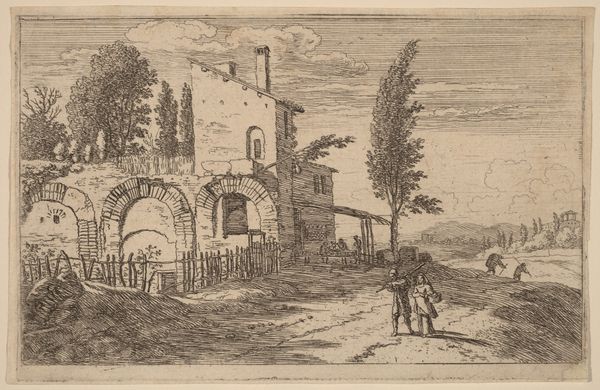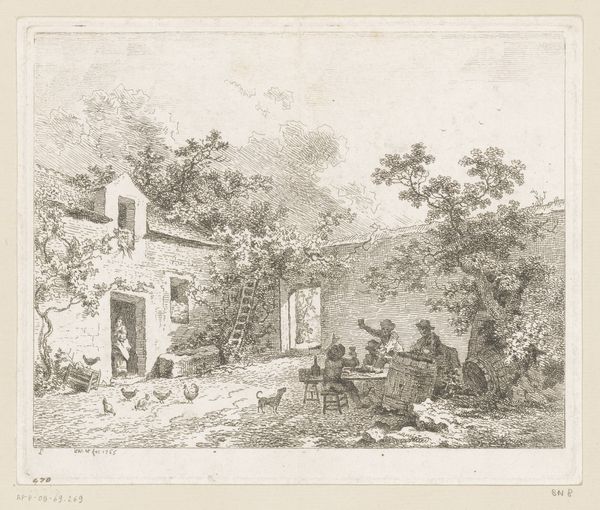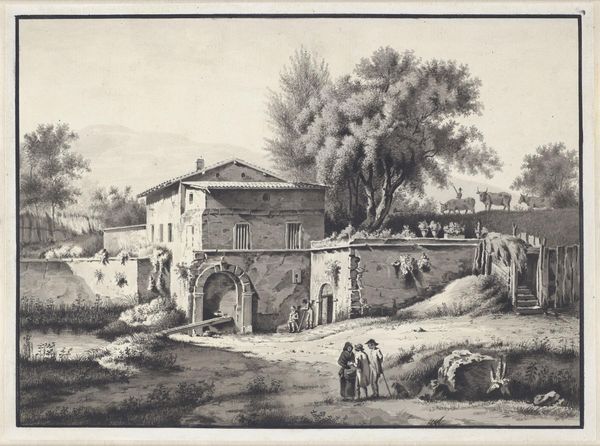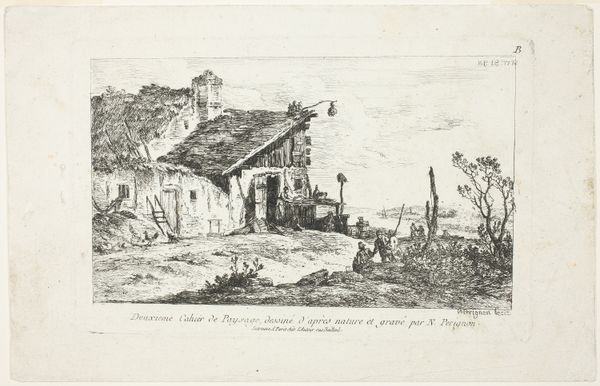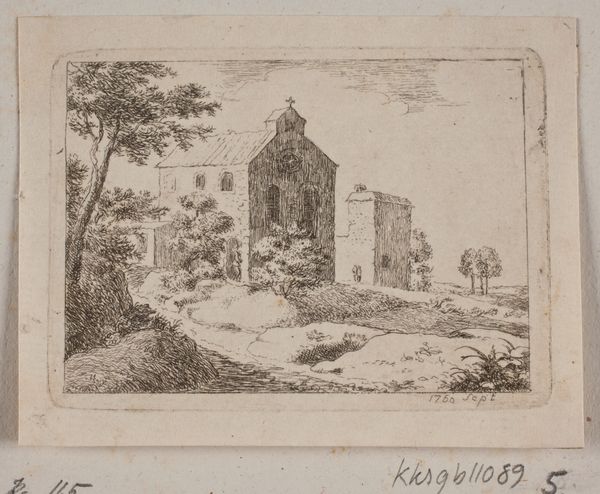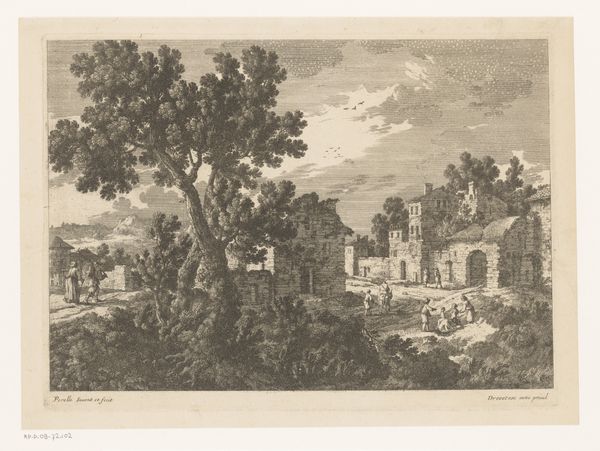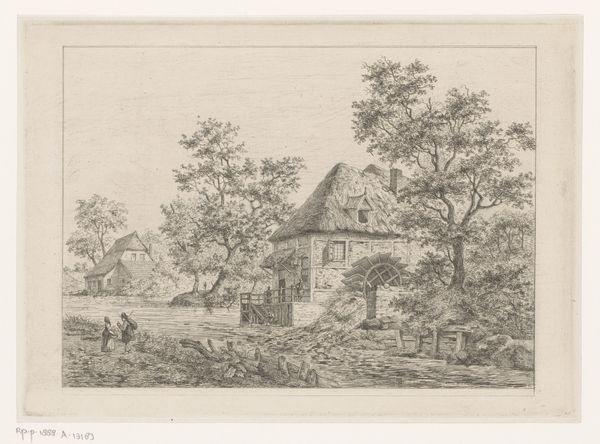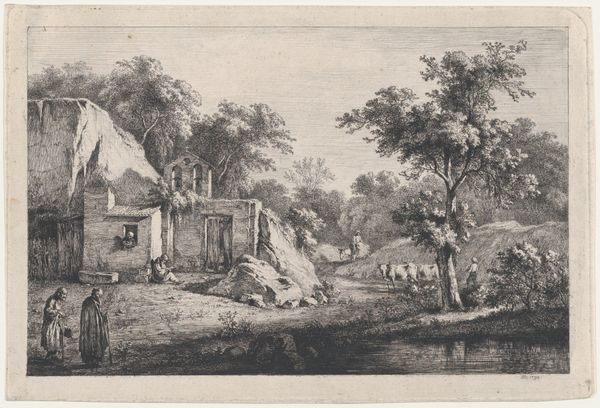
drawing, print, etching
#
drawing
#
treasure map
#
neoclacissism
# print
#
etching
#
human-figures
#
landscape
#
etching
#
cityscape
#
genre-painting
#
history-painting
#
botanical art
Dimensions: Sheet: 15 5/8 × 21 11/16 in. (39.7 × 55.1 cm) Plate: 12 15/16 × 17 1/16 in. (32.8 × 43.3 cm)
Copyright: Public Domain
Editor: This is Jean Jacques de Boissieu's "Entrance to the Village of Lentilly," an etching from 1804. It's incredibly detailed for its size, and the scene feels almost melancholic, like a memory. What do you see in this piece? Curator: I see a reflection of early 19th-century social stratification masked by an idealized landscape. Look closely – the figures atop the building, engaged in labor, are juxtaposed against the implied leisure of the natural setting. How might this composition speak to the era's burgeoning class consciousness and the romanticization of rural life versus the realities of labor? Editor: I hadn't considered that tension. I was focusing more on the picturesque decay of the architecture and how that contrasted with the figures doing work to fix it. Is that contrast also deliberate, do you think? Curator: Absolutely. The crumbling facade can be read as a visual metaphor for the fragility of the established order. Boissieu invites us to consider who benefits from the ‘repair’ of this village. Whose labor is exploited to maintain this idyllic image, and who gets to enjoy the view? And how does Neoclassicism play into legitimizing these roles? Editor: That's a really powerful way to look at it. It shifts the focus from just a pretty landscape to a commentary on social dynamics. Curator: Precisely. By questioning the visual narratives presented to us, we can uncover deeper, often uncomfortable, truths about power and representation. Editor: I’ll definitely look at landscapes differently from now on. Thanks, this has really opened my eyes. Curator: My pleasure! Always question the idyllic, and consider whose story isn't being told in the frame.
Comments
No comments
Be the first to comment and join the conversation on the ultimate creative platform.
